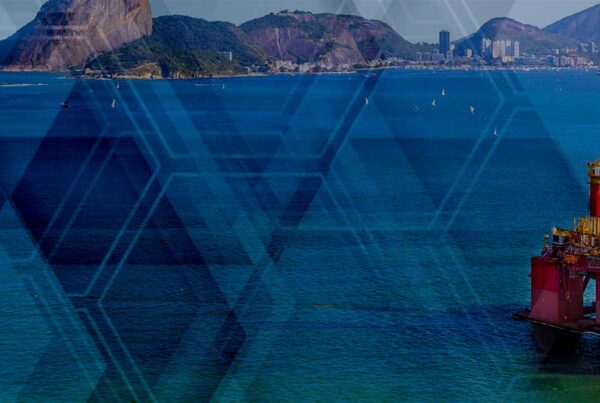SEPTEMBER 2024
Amid the numerous announcements and developments in August, two key themes stood out: funding and e-fuels. In this month’s Hydrogen Compass, we explore the funding progress made by Italy and the Netherlands, contrasted by Spain’s ongoing challenges, and the uncertain future of the e-fuels market.
€2bn committed by Italy and the Netherlands
Italy announced a commitment of nearly €1bn towards projects included in the EU’s €6.9bn IPCEI funding wave, Hy2Infra. The funding will benefit three companies: Saipem, Snam and Energie Salentine. Of the total, €470mn has been announced to develop a green steel hub within the Puglia Green Hydrogen Valley. Edison and Saipem have partnered to develop electrolyser projects in Brindisi and Taranto, with a combined capacity of 160MW, powered by 260MW of local solar PV capacity. Snam is also set to build a new hydrogen pipeline connecting the two projects, with Taranto home to Acciaierie d’Italia’s steel plant where a new DRI production facility is being developed. Details of Energie Salentine’s project are currently unknown.
The Netherlands announced that it will hold its €1bn subsidy auction from 15 to 31 October. The auction aims to support both investment and operating costs for electrolytic hydrogen production projects. Developers will submit bids on a per megawatt basis for projects with electrolyser capacities greater than 0.5MW. The aid, which will provide operational support for five to 10 years, is intended to bridge the cost gap between renewable electrolytic hydrogen and grey hydrogen – the latter which currently averages around €3.81/kg according to the Dutch government. The subsidy will be capped at €9/kg and strictly support RFNBO[1] hydrogen. Developers must secure environmental permits before applying and ensure that their facilities are operational within five years of receiving the award.
Mixed signals for the Spanish hydrogen market
Funding has become a continued issue for Spain. The government already faced criticism for a two-year delay in funding, which led major players like Iberdrola and Repsol to scale back their renewable hydrogen production targets. The government’s €800mn funding announcement in July, supporting seven projects, also sparked controversy due to the exclusion of Iberdrola’s 560MW Palos de la Frontera project in Huelva.
Jorge Paradela, Andalusia’s Regional Minister for Industry, Energy and Mining, expressed concern in a letter to Vice President Teresa Ribera in July. This was followed in August by Popular Party deputies from Huelva submitting questions[2] to the government, seeking clarification on the criteria used for funding decisions. They argued that priority should have been given to the most cost-efficient projects. The government initially cited a lack of project maturity as the reason for the exclusion, however, it is possible that the earlier two-year funding delay impacted key elements of the project, such as securing offtake agreements and other development processes, potentially hindering the project’s advancement.
Despite Spain’s ongoing funding and progress issues, the country’s potential for electrolytic hydrogen is still attracting significant investment into its hydrogen economy. Chinese electrolyser manufacturer, Hygreen Energy, announced plans in August to invest €2bn in at least two renewable electrolytic hydrogen-related projects in Andalusia. The company, which produces both alkaline and PEM electrolysers, plans to build a facility in Malaga. Currently capable of manufacturing 2GW of electrolysers at their Shandong facility, Hygreen Energy target’s capacity growth to 5GW in 2025, and is looking globally to achieve this ambition.
These mixed signals present a complex outlook for Spanish hydrogen. We explore these challenges in our recent Westwood Insight, Navigating expectations for Iberian hydrogen. Join myself and Arthur James on Thursday 19th September for a webinar that will further explore the themes presented in the insight. Register here to secure your spot.
What is going to fuel the future of shipping?
Key developments in the shipping sector in August raised uncertainty around the future of e-fuels, with challenges raised related to policy and regulation, carbon availability[3] and offtake agreements. Vincent Clerc, CEO of AP Moller-Maersk, highlighted these concerns during their 2Q and 1H results call, emphasising the company’s strategy to avoid exposure to a single fuel for its renewable fleet commitments. E-fuel regulations and supply certainty are key factors influencing the company’s choice of sustainable fuel source. Although Maersk launched its first methanol dual-fuel ship last September, its fuel supplier OCI confirmed that biomethane was used instead of renewable hydrogen-derived e-methanol. OCI suggested that e-methanol may not be available in the short-term exacerbated by the challenge to find consistent and reliable sources of carbon, leading Maersk to explore ammonia as an alternative. However, the highly toxic and corrosive nature of ammonia, coupled with pending international regulations, limits the company’s commitment to this fuel. As such, Maersk has started securing offtake agreements for bio-LNG for its new fleet of vessels.
Securing long-term offtake agreements for e-fuels has emerged as a key challenge for many developers. This issue was emphasized by Orsted’s unexpected announcement in August, cancelling its FlagshipONE renewable hydrogen-to-methanol project in Sweden nearly two years after taking FID. Orsted cited their current inability to create financial value from e-fuels projects, making the strategic decision to exit the liquid e-fuels market entirely, and instead opting to refocus on renewable hydrogen and offshore wind – areas where it has established expertise.
The shipping sector faces significant challenges, with Spanish developer HyFive stating that the high cost of e-methanol poses a major obstacle. This makes it difficult for both producers and offtakers to secure agreements at sustainable prices. Despite these challenges, companies like European Energy have successfully secured binding offtake agreements for their e-methanol projects. European Energy’s project in Denmark, for example, have achieved this by diversifying its offtake agreements across various industries, including Maersk for shipping, and Lego and Novo Nordisk for the plastic product manufacturing process – highlighting the difficulty in finding large-scale offtake opportunities solely within the shipping sector for e-methanol.
With obvious challenges associated with e-methanol, Equinor has focussed on ammonia to help achieve their ambition to halve their Norwegian maritime emissions by 2030. In August, the company signed an agreement with Eidesvik Offshore and Wartsila to convert one of its battery-LNG dual-fuel vessels to operate on hydrogen derived-ammonia by 2026. Warstila will supply the necessary engine, fuel gas supply system, and exhaust treatment for the vessel. The partners envision the gradual adoption of ammonia, positioning it as a key maritime fuel by 2040 as the industry works towards achieving net-zero emission over the next 25 years.
Companies across the e-fuels value chain have adopted different strategies to address the challenges faced by project developers and offtakers. These approaches range from securing diversified offtake agreements to, in some cases, exiting the industry altogether. While ammonia present some potential nearer-term opportunities, significant barriers such as the need for regulatory frameworks remain. Although these challenges are not unique to ammonia, they will play a critical role in shaping the future development of this segment of the developing renewable hydrogen market.
Key Northwest European Project Watch
Key project announcements and developments in August
| Project | Update |
| GET H2 Nukleus | RWE and Westfalen Group are constructing a hydrogen refuelling station at the Emsland gas-fired power plant in Lingen, Germany, set to begin operations in 2025. The facility will provide up to 500kg of renewable electrolytic hydrogen daily, sourced from RWE’s 14MW electrolyser in Lingen, for commercial vehicles, tankers, and passenger cars. The initiative, with a total investment of €18mn, marks the first collaboration between RWE and Westfalen, who have formed a JV to expand hydrogen infrastructure in Lower Saxony and North Rhine-Westphalia. |
| Speyside Hydrogen | Storegga has launched a four week public consultation on its Speyside Hydrogen project, which aims to decarbonise whisky production in Scotland, particularly in the Moray region, home to over 50 distilleries that account for nearly 45% of the area’s fossil fuel demand. Moray is one of 14 locations identified within the Scottish Government’s Hydrogen Policy Statement and Hydrogen Action Plan. The project is split into two phases which will deliver a total of 70MW of electrolyser capacity. This initiative support Scotland’s 2045 Net Zero target, with public consultations and community engagement playing a key role in finalising the project’s design. |
| H2Teesside | BP has reached the final stage of negotiations with the UK government over a Low-Carbon Hydrogen Agreement for its H2Teesside CCS-enabled hydrogen project, which aims to produce 1.2GW (LHV) of hydrogen in northeast England. The project is part of the East Coast Cluster and will incorporate carbon capture and storage, aiming to decarbonise industry in the region. BP has signed contracts with Technip Energies for the front-end engineering design (FEED) of the hydrogen production facility and with Costain to design the 31km pipeline network that will distribute hydrogen to industrial users. These contracts are expected to be completed by 2025. |
| H2Lubmin | German developer HH2E has signed a €45mn contract with Gebrüder Karstens Bauunternehmung to construct a 100MW green hydrogen plant in Lubmin, Germany, pending a final investment decision (FID) expected later this year. The project, scalable up to 1GW, is part of HH2E’s plan to establish 4GW of green hydrogen capacity across Germany by 2030. The project has been delayed by corporate restructuring with FID supposed to have been taken in October 2023. |
| Catalina PTX | Copenhagen Infrastructure Partners (CIP) increased the estimated cost of its Catalina hydrogen project by €285mn to €2.1bn due to additional investments in pipelines and compressors to connect to the pending Spanish Hydrogen Backbone. The project’s first phase includes a 500MW electrolyser set to begin operations by late 2029. The project originally proposed a direct pipeline, built by Enagas, to Fertiberia’s ammonia plant. |
If you have any project updates that you would like to share with Westwood’s Hydrogen team, please contact Jun using the contact details below.
Jun Sasamura, Senior Analyst – Hydrogen
[email protected]
View all issues of Hydrogen Compass here:




